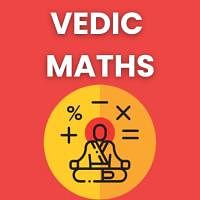Class 6 Exam > Class 6 Questions > The property which forms the basis of sieving...
Start Learning for Free
The property which forms the basis of sieving
- a)difference in weight
- b)difference in colour
- c)difference in shape
- d)difference in size
Correct answer is option 'D'. Can you explain this answer?
Most Upvoted Answer
The property which forms the basis of sievinga)difference in weightb)d...
Difference in weight this process is called winnowing option A is not correct Option B difference in colour that's type B is not correct Option C is now check Option C is not correct difference in shape Option D difference in size is correct
Community Answer
The property which forms the basis of sievinga)difference in weightb)d...
The correct answer is option 'D', difference in size. Sieving is a method of separating mixtures based on the difference in size of the particles. It is a commonly used technique in various industries such as mining, construction, and agriculture.
Sieving involves passing a mixture through a sieve, which is a device with uniform holes or pores of a specific size. The particles that are smaller than the size of the sieve openings pass through, while larger particles are retained. This separation is achieved due to the principle that particles with sizes smaller than the sieve openings can fit through, whereas larger particles cannot.
Here is a detailed explanation of why the property of difference in size forms the basis of sieving:
1. Principle of Sieving:
- Sieving works based on the principle that particles smaller than the sieve openings will pass through, while larger particles will be retained.
- The size of the sieve openings determines the size of particles that can pass through.
2. Importance of Particle Size:
- Particles in a mixture can have different sizes, ranging from large to small.
- The size of particles affects their properties, behavior, and uses.
- Sieving is particularly useful for separating mixtures where particle size is a distinguishing factor.
3. Separation Based on Size:
- When a mixture is poured onto a sieve, the smaller particles will fall through the sieve openings due to gravity.
- The larger particles will be retained on top of the sieve.
- By carefully selecting the appropriate sieve size, it is possible to separate particles of different sizes.
4. Applications of Sieving:
- Sieving is used in various industries for different purposes.
- In mining, sieving is used to separate valuable minerals from the ore.
- In construction, sieving is used to separate different sizes of aggregate for concrete production.
- In agriculture, sieving is used to separate grains and seeds of different sizes.
In conclusion, the property of difference in size forms the basis of sieving. By using sieves with different opening sizes, particles of different sizes can be separated effectively. Sieving is a widely used method for separating mixtures and has numerous applications in various industries.
Sieving involves passing a mixture through a sieve, which is a device with uniform holes or pores of a specific size. The particles that are smaller than the size of the sieve openings pass through, while larger particles are retained. This separation is achieved due to the principle that particles with sizes smaller than the sieve openings can fit through, whereas larger particles cannot.
Here is a detailed explanation of why the property of difference in size forms the basis of sieving:
1. Principle of Sieving:
- Sieving works based on the principle that particles smaller than the sieve openings will pass through, while larger particles will be retained.
- The size of the sieve openings determines the size of particles that can pass through.
2. Importance of Particle Size:
- Particles in a mixture can have different sizes, ranging from large to small.
- The size of particles affects their properties, behavior, and uses.
- Sieving is particularly useful for separating mixtures where particle size is a distinguishing factor.
3. Separation Based on Size:
- When a mixture is poured onto a sieve, the smaller particles will fall through the sieve openings due to gravity.
- The larger particles will be retained on top of the sieve.
- By carefully selecting the appropriate sieve size, it is possible to separate particles of different sizes.
4. Applications of Sieving:
- Sieving is used in various industries for different purposes.
- In mining, sieving is used to separate valuable minerals from the ore.
- In construction, sieving is used to separate different sizes of aggregate for concrete production.
- In agriculture, sieving is used to separate grains and seeds of different sizes.
In conclusion, the property of difference in size forms the basis of sieving. By using sieves with different opening sizes, particles of different sizes can be separated effectively. Sieving is a widely used method for separating mixtures and has numerous applications in various industries.
Attention Class 6 Students!
To make sure you are not studying endlessly, EduRev has designed Class 6 study material, with Structured Courses, Videos, & Test Series. Plus get personalized analysis, doubt solving and improvement plans to achieve a great score in Class 6.

|
Explore Courses for Class 6 exam
|

|
The property which forms the basis of sievinga)difference in weightb)difference in colourc)difference in shaped)difference in sizeCorrect answer is option 'D'. Can you explain this answer?
Question Description
The property which forms the basis of sievinga)difference in weightb)difference in colourc)difference in shaped)difference in sizeCorrect answer is option 'D'. Can you explain this answer? for Class 6 2024 is part of Class 6 preparation. The Question and answers have been prepared according to the Class 6 exam syllabus. Information about The property which forms the basis of sievinga)difference in weightb)difference in colourc)difference in shaped)difference in sizeCorrect answer is option 'D'. Can you explain this answer? covers all topics & solutions for Class 6 2024 Exam. Find important definitions, questions, meanings, examples, exercises and tests below for The property which forms the basis of sievinga)difference in weightb)difference in colourc)difference in shaped)difference in sizeCorrect answer is option 'D'. Can you explain this answer?.
The property which forms the basis of sievinga)difference in weightb)difference in colourc)difference in shaped)difference in sizeCorrect answer is option 'D'. Can you explain this answer? for Class 6 2024 is part of Class 6 preparation. The Question and answers have been prepared according to the Class 6 exam syllabus. Information about The property which forms the basis of sievinga)difference in weightb)difference in colourc)difference in shaped)difference in sizeCorrect answer is option 'D'. Can you explain this answer? covers all topics & solutions for Class 6 2024 Exam. Find important definitions, questions, meanings, examples, exercises and tests below for The property which forms the basis of sievinga)difference in weightb)difference in colourc)difference in shaped)difference in sizeCorrect answer is option 'D'. Can you explain this answer?.
Solutions for The property which forms the basis of sievinga)difference in weightb)difference in colourc)difference in shaped)difference in sizeCorrect answer is option 'D'. Can you explain this answer? in English & in Hindi are available as part of our courses for Class 6.
Download more important topics, notes, lectures and mock test series for Class 6 Exam by signing up for free.
Here you can find the meaning of The property which forms the basis of sievinga)difference in weightb)difference in colourc)difference in shaped)difference in sizeCorrect answer is option 'D'. Can you explain this answer? defined & explained in the simplest way possible. Besides giving the explanation of
The property which forms the basis of sievinga)difference in weightb)difference in colourc)difference in shaped)difference in sizeCorrect answer is option 'D'. Can you explain this answer?, a detailed solution for The property which forms the basis of sievinga)difference in weightb)difference in colourc)difference in shaped)difference in sizeCorrect answer is option 'D'. Can you explain this answer? has been provided alongside types of The property which forms the basis of sievinga)difference in weightb)difference in colourc)difference in shaped)difference in sizeCorrect answer is option 'D'. Can you explain this answer? theory, EduRev gives you an
ample number of questions to practice The property which forms the basis of sievinga)difference in weightb)difference in colourc)difference in shaped)difference in sizeCorrect answer is option 'D'. Can you explain this answer? tests, examples and also practice Class 6 tests.

|
Explore Courses for Class 6 exam
|

|
Suggested Free Tests
Signup for Free!
Signup to see your scores go up within 7 days! Learn & Practice with 1000+ FREE Notes, Videos & Tests.























